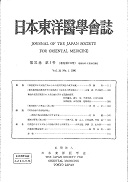It takes 12 minutes to carry out pulse diagnosis with ourold Electroscillopulsimeter in which the pulse at one spot is recorded at one time, and we constructed a new pulsimeter in which the pulses are simultaneously recorded at three spots, and succeeded to reduce the time required to two minutes. The instrument is designed so that after it is pressurized, the pressure is reduced first at the shaku (III) and then at the kan (II) and finally at the sun (I) in order to keep the pressure exerted by the blood stream to the extravascular tissue as uniform as possible.
We also improved the method of fastening the recorder to prevent the stethoscope part from moving when the pressure is applied. Another improvement is the use of lower pressures. With the old instrument, pressures of 150 to 300 mm Hg were commonly used, but with the new model, a pressure as low as 60-150 mm Hg (presumably of the same order of magnitude as the pressure produced when the pulse is taken with the finger) is sufficient for the measurement, and the patient is spared the discomfort resulting from the mechanical interference of the instrument such as numbness. It took us two years to develop this improved model.
With the new recorder, we have carried out 96 experiments on 15 subjects.
(1) The measurements carried out in the early morning while the subject is asleep in the supine position and then after he has awakened and assumed the squatting position show a transient change of the pulse. But the relative strength of the six pulses is scarecely affected. Yawning produces a similar effect.
(2) The six subjects who urinated showed strengthening of the cystic pulse 10 to 30 minutes afterward, but none showed any change of the renal pulse during this interval. Two subjects had menstrual flow and both showed full renal pulse. One of them had empty renal pulse just before the flow.
(3) Drinking of 200cc of warm water gives greatest changes to the cystic and renal pulses, all the subjects showing the maximum strength of the former 5 to 20 minutes after the drinking and that of the latter 15 to 30 minutes after. It draws our attention that drinking of 200 cc of warm water gives no change to gastric pulse in 2 cases.
When a light meal and 200cc of warm water are taken together, all the six patients showed maximum strength of the gastric pulse 30 to 60 minutes afterward, that of the splenic pulse 30 to 150 minutes after, and of the cystic and renal pulses 20 to 90 minutes after. Thus, given warm water alone, the subjects regain normal pulse in 30 minutes, but a light meal with the water keeps the pulse at higher than normal level for one to two and a half hours.(4) Six subjects were given a total of 12 applications, each consisting of a single application of the no. 3 needle left in situ for one minute. As had been expected, the empty pulse (-) was replenished in every case, but it became full (+) only in six of them.
(5) When the pulses on both sides happen to be influenced by a single application, Akabane's see-saw phenomenon is observed. An attempt, was made of replenishing the empty kan pulse (II) of 6 patients. Within ten minutes of the application of the needle, the kan pulse (II) on the same side became full in 11 times of them and that on the opposite side became full in 15. In the intevral between the 20th and 40th minute fullness on the samd side was observed in 12 times and on the opposite side in 5.
The explanation may be that it takes time for the empty pulse to become full. But in these cases the needle was applied on the foot, and the phenomenon agrees with the authors' hypothesis that the keiraku (meridian) of the foot acts on the hand on the opposite side.
View full abstract
